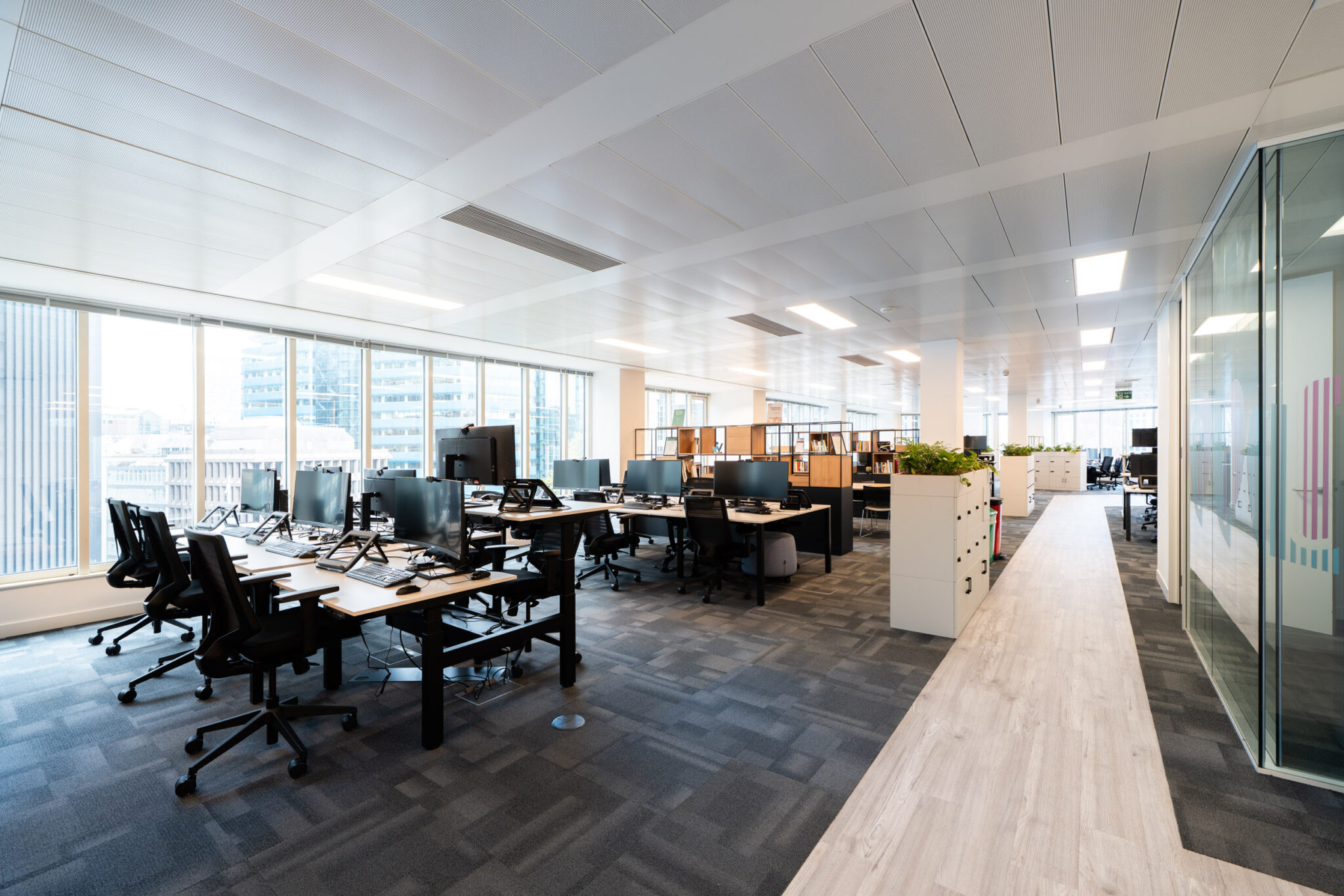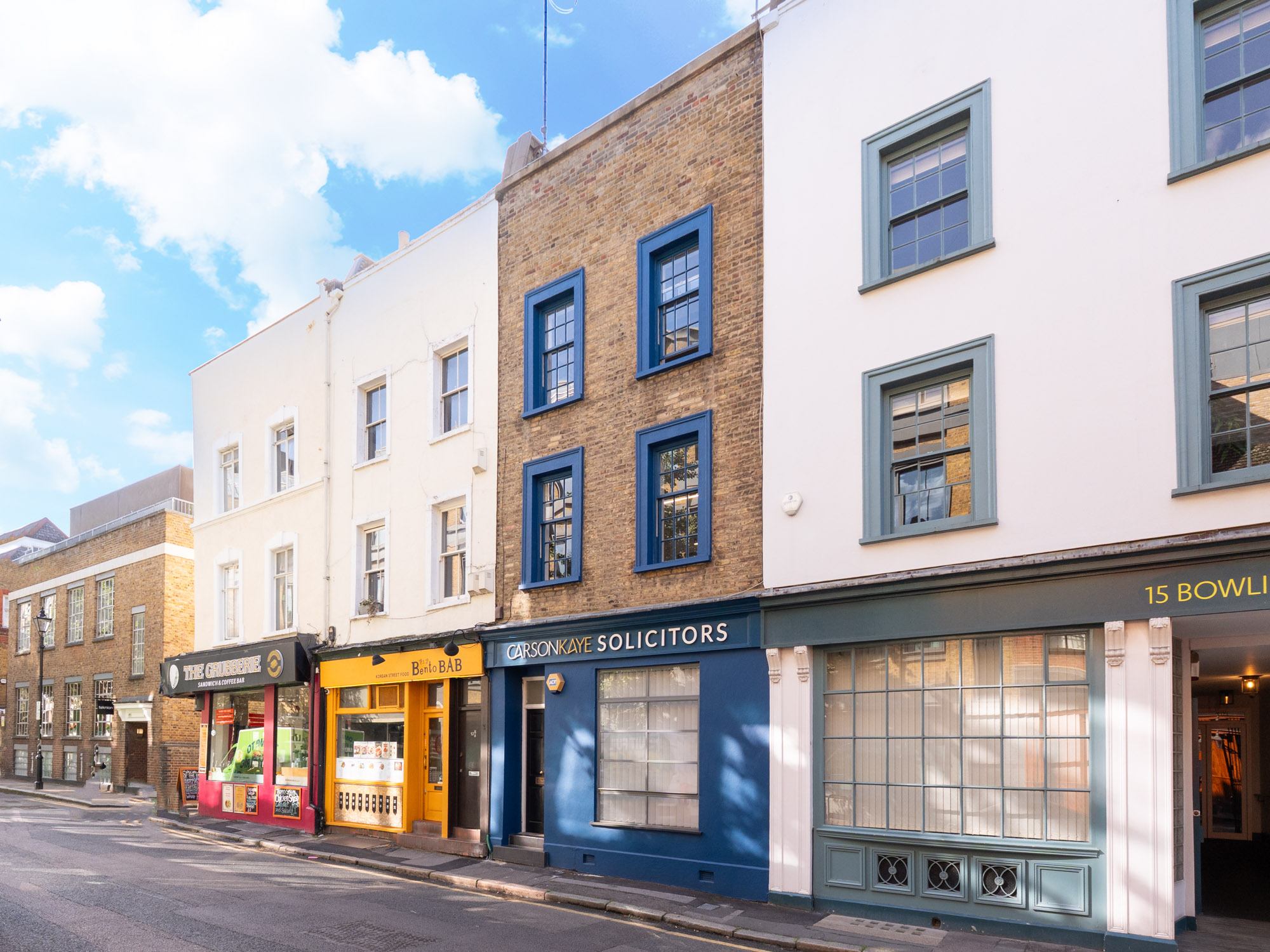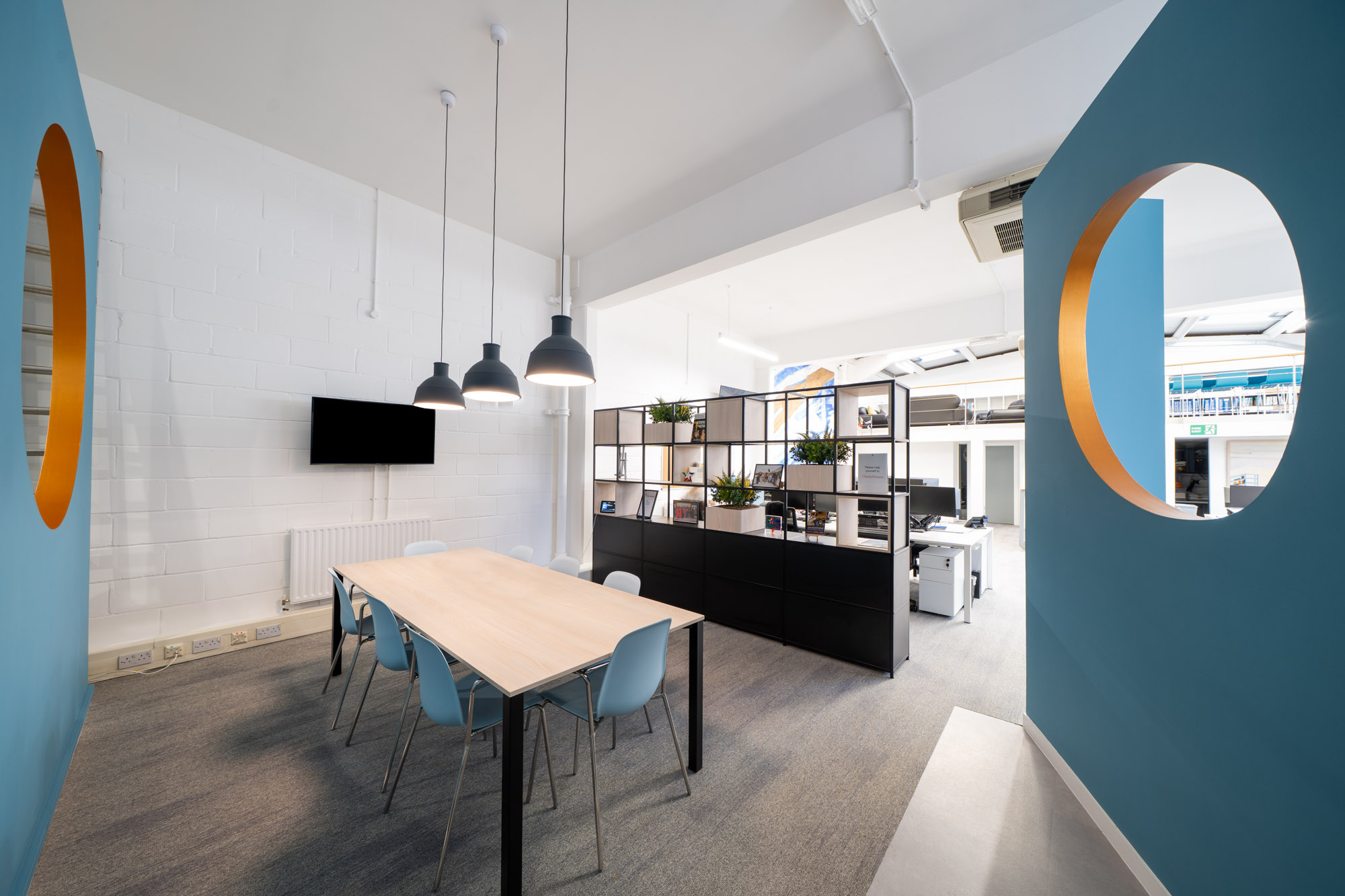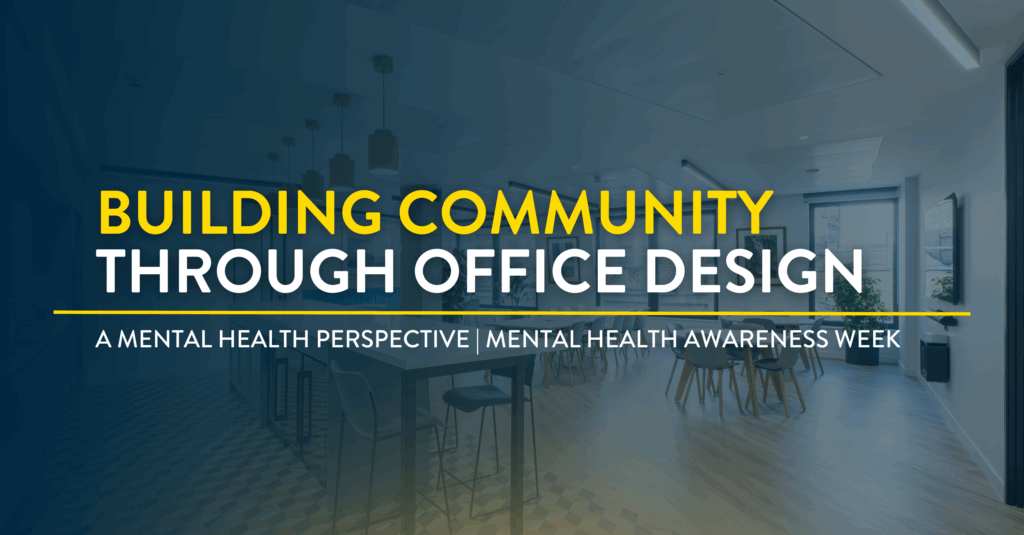
This week marks Mental Health Awareness Week in the UK. Led by our friends at the Mental Health Foundation, this year’s theme centres on community. For those of us passionate about workspace design, this theme resonates with questions we’ve been exploring for years:
- How do our physical environments either nurture or hinder genuine human connection?
- And what role does thoughtful design play in supporting mental wellbeing?
In this article, we’ll share some insights from our almost five decades of designing workplaces that foster genuine connections. We’ll explore practical approaches that transform offices from simply places that people go to work, into places where people can thrive. Something that matters now more than ever for our collective mental health.
Why Workplace Community Matters for Mental Health
Research has shown that workplace relationships significantly impact our mental wellbeing and when we feel connected at work, we’re more resilient in the face of challenges.
A study in the Journal of Occupational Health Psychology found strong correlations between colleague support networks and reduced job stress . Similarly, Harvard Business Review research highlighted how employees with meaningful workplace relationships demonstrate greater resilience during organisational changes.
We’ve seen this firsthand at Constructive Space. Workplaces designed solely for efficiency often miss something crucial, the human need for connection. When we shift our thinking to see offices as places for community rather than just production facilities, everything changes.
Design Elements That Bring People Together
Natural Gathering Points
The most vibrant communities form around natural gathering points.
We’ve found that centralised breakout areas draw people from different departments, creating those chance encounters that spark new ideas and relationships. Kitchen spaces with communal tables (not just grab-and-go stations) encourage casual chats that wouldn’t usually happen in meeting rooms.
Comfortable lounge spaces that feel distinct from work zones subconsciously give people a setting to connect differently. Adding a coffee bar with comfortable seating might just lead to more cross-department collaboration than a year of formal teambuilding exercises. Research from the University of California shows that these thoughtfully designed “collision spaces” significantly boost collaboration and workplace satisfaction.


It’s worth noting that these spaces need thoughtful acoustic design. A balance between openness and sound management that makes conversation comfortable without disrupting focused work nearby.
Flexibility for Different Connection Styles
It’s important to remember that people connect differently. Some thrive in lively group settings, while others build deeper relationships through one-on-one conversations. Think extroverts and introverts. Effective community spaces accommodate both.
To help with flexibility, movable furniture systems can be very useful by allowing teams to reconfigure spaces based on the type of interaction they need, from intimate mentoring conversations to spirited group brainstorming sessions.
Technology integration matters too. Community extends beyond physical presence, especially in today’s hybrid workplace with so many of us working from home some days. We’ve helped organisations create tech-enabled spaces that connect in-office and remote team members seamlessly, ensuring no one feels like a second-class participant.
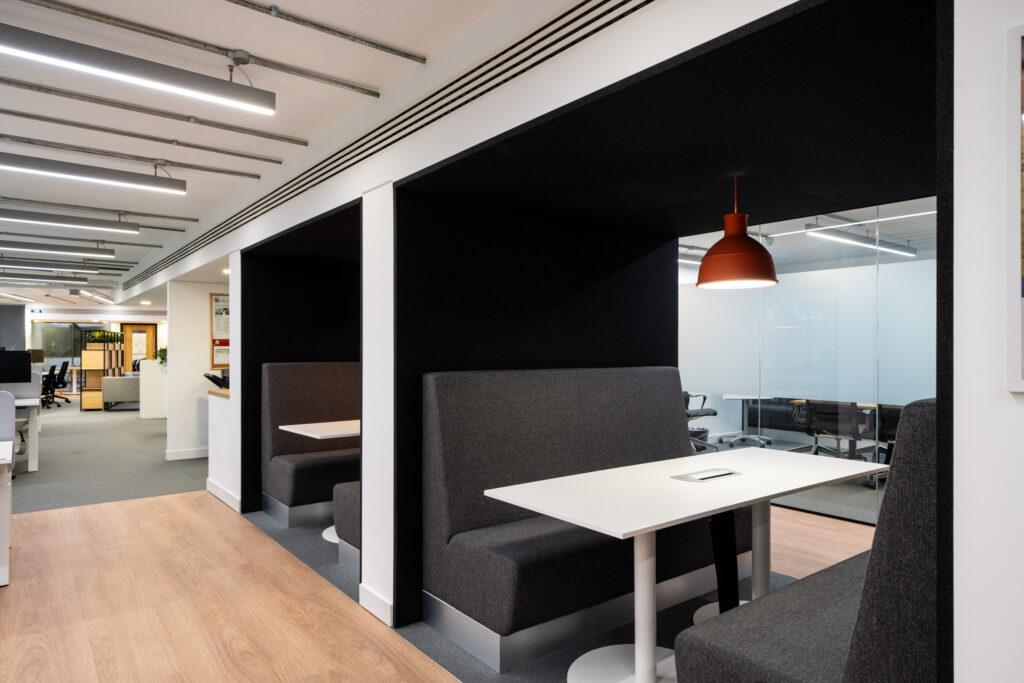
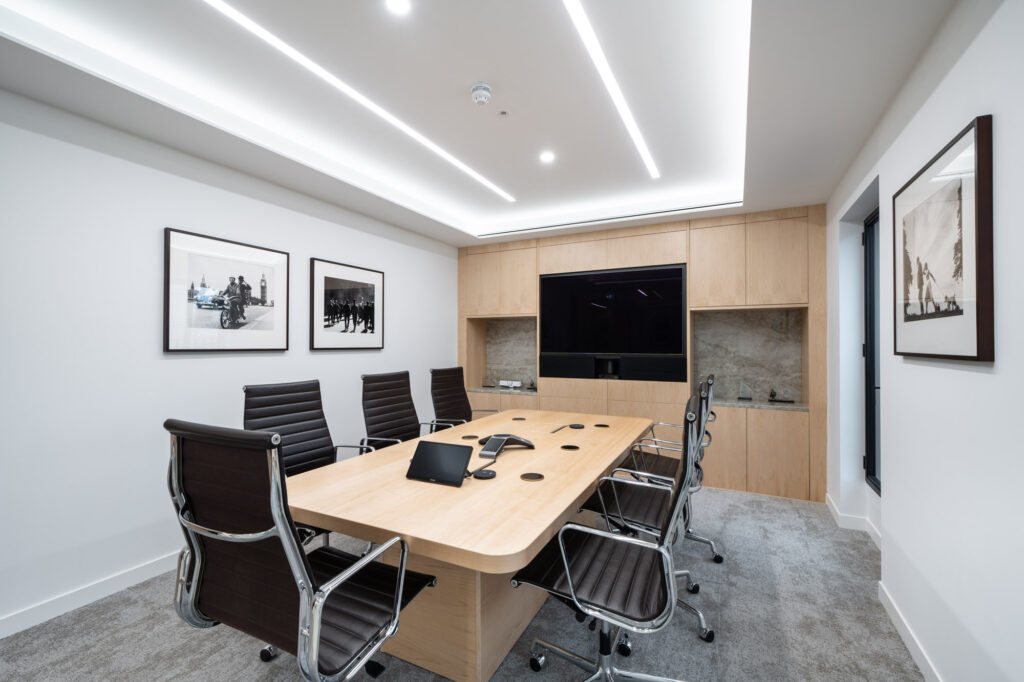
When designing these flexible zones, we often ask, “How might this space support both planned and unplanned community building?” The goal is creating environments where scheduled team meetings and impromptu conversations are equally valued.
Designing for Everyone
True community welcomes everyone, including people with different sensory needs and neurodivergent team members.
Lighting variety makes a remarkable difference. Some people think clearly under bright light, while others find it overwhelming. Giving teams control over their lighting environment sends the message of whatever your needs are, they matter.
Acoustic design deserves special attention. Create zones with different sound profiles, from energetic collaboration spaces to quieter areas for focused work or sensitive conversations. These zones allow people to choose environments that match their specific task or working style.
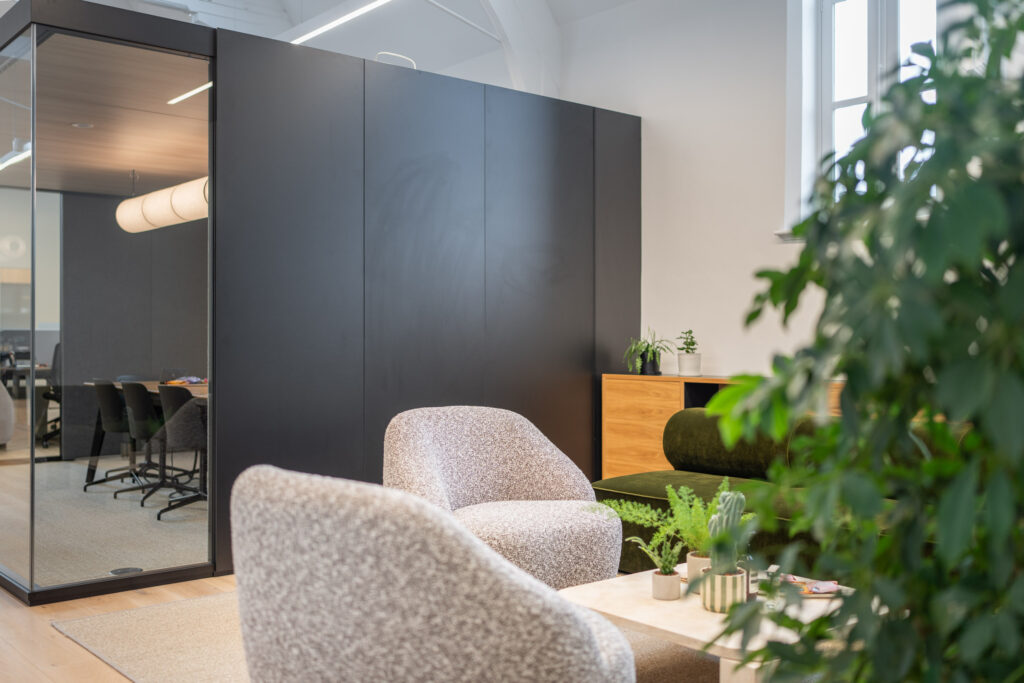

Natural elements, also known as biophilic design, transforms how people feel in a space. Living walls, natural materials, and access to daylight have been proven to reduce stress hormones and create environments where authentic connections flourish. In fact, University of Exeter researchers found significant wellbeing improvements (up to 15%) when natural elements featured prominently in workspace design. The extent to which biophilic design might feature in your office space can vary based on brand and aesthetic preferences, but it’s rare you won’t see any indoor vegetation these days.
By designing with these diverse needs in mind, it signals that you value each person’s unique experience, having positive knock-on effects to productivity and talent retention and attraction.
Beyond Physical Design: Cultivating Community Culture
While thoughtful design lays the groundwork, vibrant communities need intentional cultural practices too. The physical environment can either support or hinder these practices.
Creating Spaces for Meaningful Interaction
The physical layout directly shapes how and where relationships form. Dedicated areas for cross-team lunches create neutral territory where hierarchies temporarily dissolve, allowing people to connect as individuals.
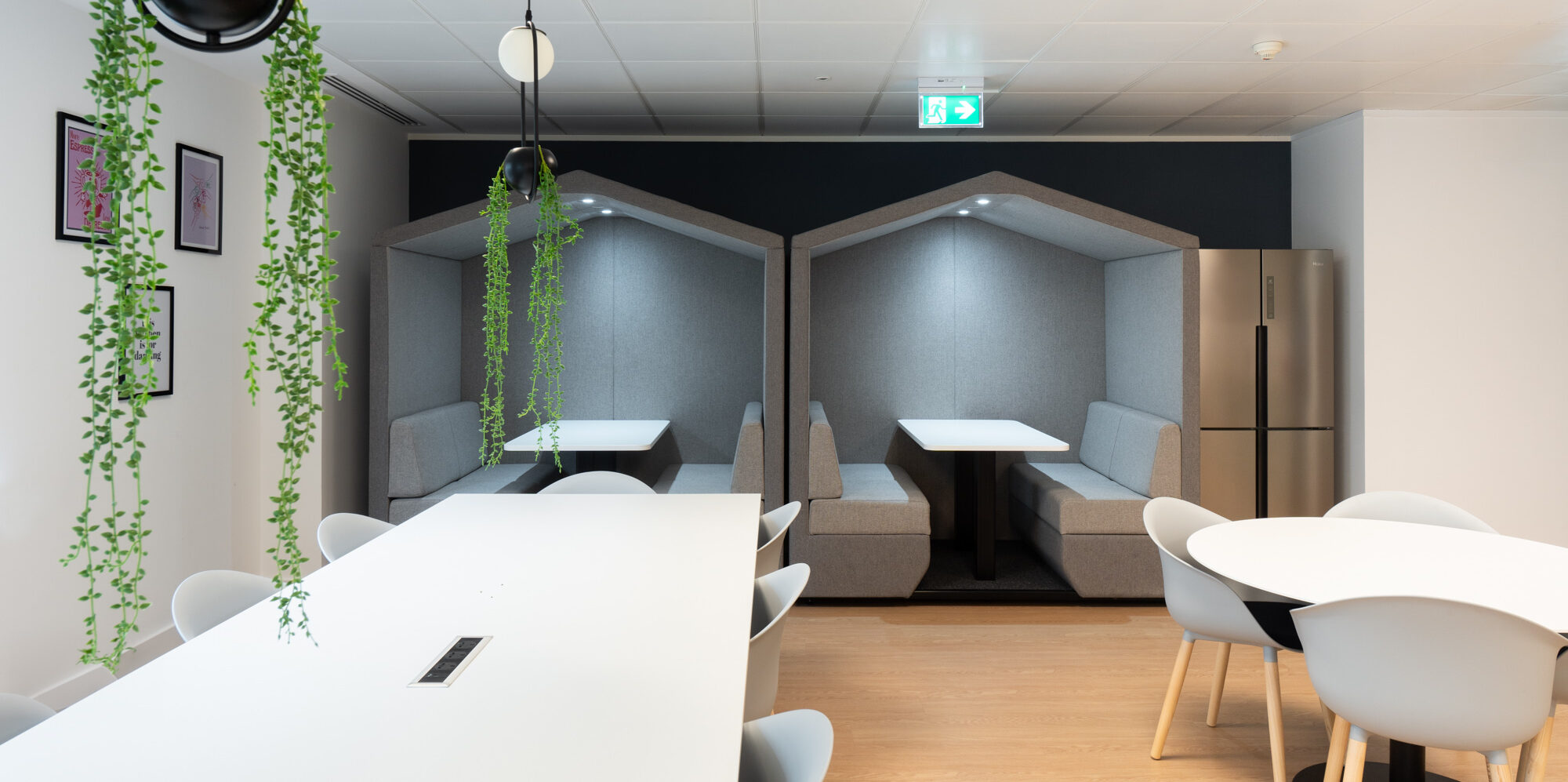
Community boards (both digital and physical) help people find others with shared interests beyond work projects. We’ve seen cycling clubs, book groups, and volunteer initiatives form around these simple connection points.
Spaces that welcome employee resource groups or wellness activities demonstrate that the organisation values whole-person wellbeing and diverse perspectives. These purposeful environments transform abstract values like “inclusion” and “wellbeing” into tangible everyday experiences.
MIT’s Human Dynamics Laboratory found that physical proximity and interaction opportunities boost collaboration by up to 40%, highlighting how intentional space planning directly impacts relationship formation.
Safe Spaces for Authentic Connection
Environmental design significantly impacts psychological safety – that feeling that you can be yourself without fear of negative consequences. Without this safety, community remains superficial.
Semi-private conversation areas enable the vulnerable discussions that build trust and deepen connections. These “in-between” spaces, neither fully public nor completely private, often host the conversations that transform workplace relationships.
Clear wayfinding reduces the background anxiety that some people experience in unfamiliar environments. This is particularly important for neurodivergent team members, ensuring navigation doesn’t deplete mental resources needed for meaningful connection.
Real-World Evidence: What Research Shows
Workspace design’s impact on community isn’t just theoretical. Steelcase’s Global Workplace Report, which surveyed over 12,000 employees across 16 countries, found that workers with access to diverse collaboration spaces reported 32% higher engagement scores and significantly stronger workplace connections.
The Leesman Index, which measures workplace effectiveness, consistently shows that organisations prioritising community-oriented design see measurable improvements in belonging and workplace satisfaction.
These findings reinforce what we’ve observed in our client projects—thoughtful environmental design creates the conditions where community naturally flourishes.
Starting Small: Practical Steps for Any Organisation
Major renovations aren’t always feasible, but luckily meaningful community-building improvements don’t require massive budgets.
Underutilised meeting rooms can transform into community hubs with some comfortable furniture and collaborative tools. Even simple changes like rearranging seating into conversation-friendly configurations can shift how people interact in a space.
In open areas, creating movable “conversation stations” with thoughtfully arranged seating encourages those spontaneous interactions that build relationships over time. These flexible setups can adapt as the organisation learns what works best for their unique culture.

Some organisations designate specific times when particular areas transform into community zones – whether for structured activities or simply as authorised “social time” during the workday. This time-based approach works especially well when physical modifications aren’t possible.
Even modest changes send powerful signals about priorities. Gallup’s research confirms that small increases in belonging correlate significantly with reduced employee turnover and higher engagement – outcomes that directly impact both wellbeing and bottom-line results.
Measuring What Matters
Like any workspace initiative, community-building efforts benefit from thoughtful measurement and there’s two main approaches we recommend:
Regular surveys – help track belonging and connection over time, providing insights into how design changes impact employee experience. Specific questions about where and how people connect often reveal surprising patterns.
Space utilisation analysis – identifies which community areas generate engagement, and which might need rethinking and tweaking. Sometimes the most expensive or elaborate spaces aren’t where authentic community emerges.
Looking Forward: Designing for Human Connection
As Mental Health Awareness Week reminds us, community shouldn’t be a workplace luxury – it’s essential for mental wellbeing. We know thoughtful workspace design serves as a powerful catalyst for the human connections that protect and enhance mental health.
The most successful workplaces recognise that meaningful connection, the foundation of true community, requires intentional design. It means creating environments where people can authentically engage, collaborate, and support each other through both challenges and celebrations.
This Mental Health Awareness Week, look at your workspace with fresh eyes. Where does it support community connection? Where does it create barriers?
Even small changes in how we design and use our physical environments can profoundly impact our collective mental wellbeing.
